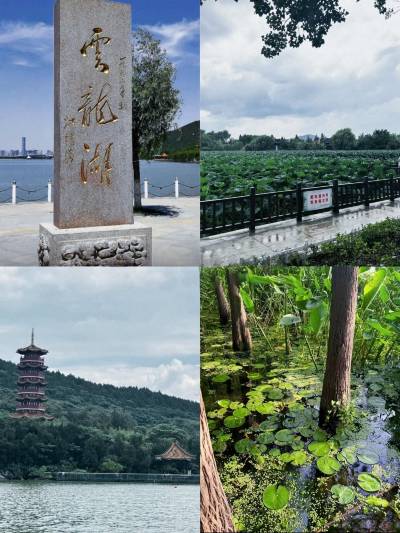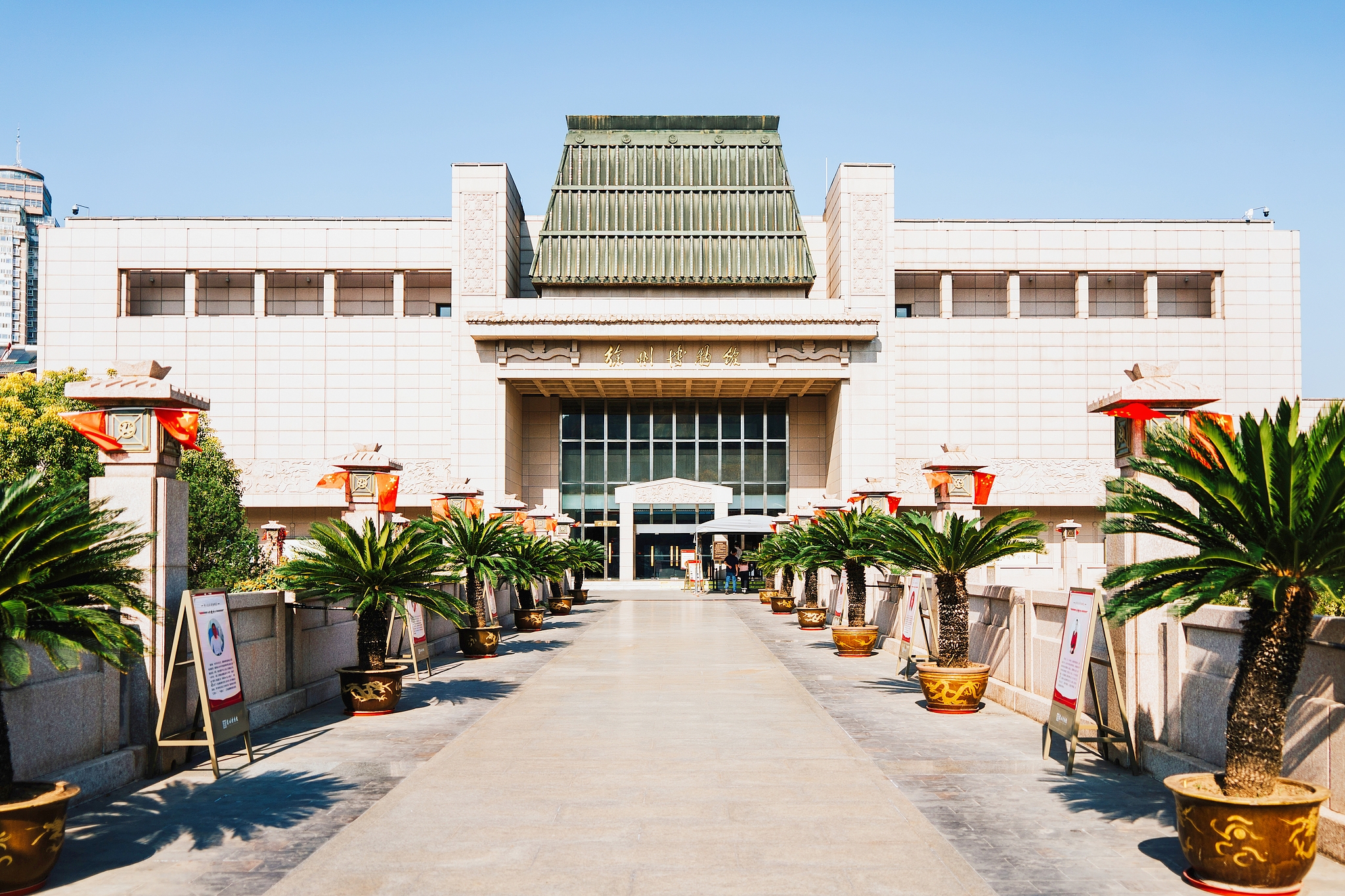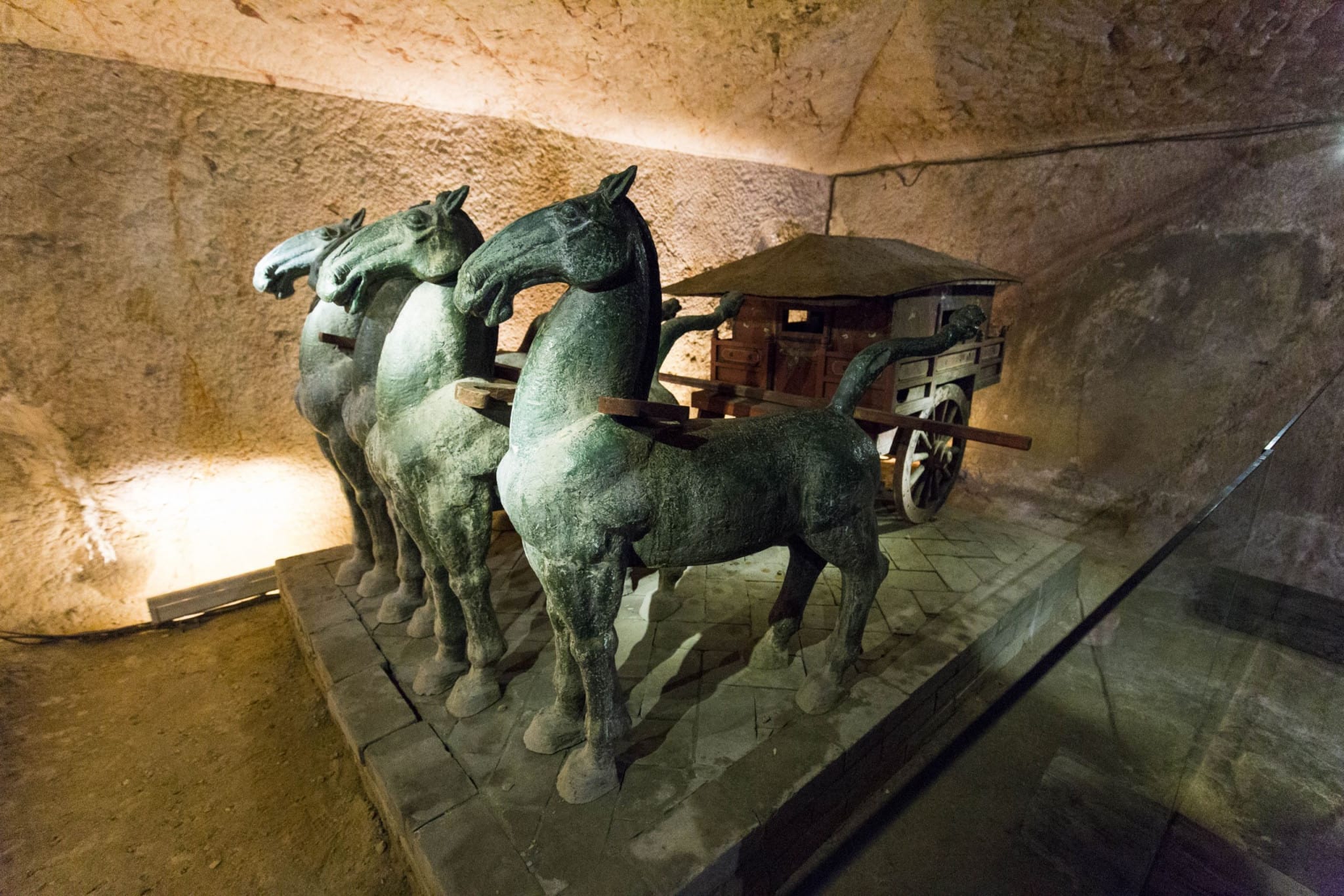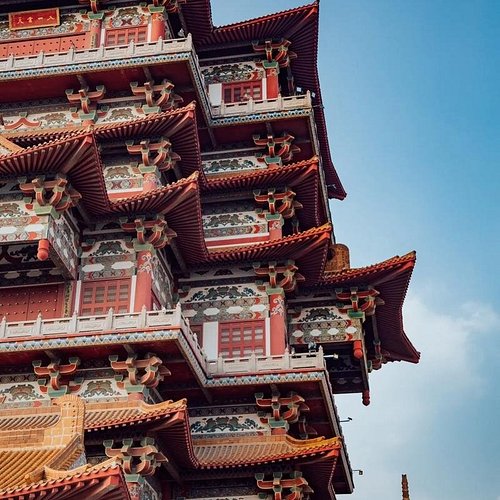7 Must-See Treasures at Xuzhou Museum: From Jade to Terracotta Warriors

An Essential Guide to Visiting Xuzhou Museum
Nestled in the heart of Jiangsu province, the Xuzhou Museum is a treasure trove of ancient history that captivates visitors with its stunning collection of jade artifacts and terracotta warriors. What sets this museum apart is not just the exquisite craftsmanship of its exhibits but the unique opportunity to witness ongoing archaeological excavations. Imagine walking through the museum and catching a glimpse of historians and archaeologists meticulously unearthing artifacts that have remained hidden for centuries!
This guide will navigate you through everything you need to know for an enriching visit to the Xuzhou Museum. From essential visiting hours and practical tips to the must-see exhibits, including the remarkable jade pieces from the Han Dynasty and the famous terracotta figures, you’ll find all the information you need to make the most of your time in this cultural gem. Whether you’re a history buff or simply curious about China’s rich heritage, the Xuzhou Museum promises an unforgettable experience.
In This Guide
- An Essential Guide to Visiting Xuzhou Museum
- The Rich History and Legends of Xuzhou Museum
- Main Highlights: What You Absolutely Can’t Miss
- Planning Your Visit: A Practical Guide
- Tickets: Prices, Booking, and Tips
- How to Get There: A Complete Transportation Guide
- Local Cuisine and Accommodation Nearby
- Frequently Asked Questions
- Final Thoughts on Your Trip
The Rich History and Legends of Xuzhou Museum
Unveiling the Past: The Journey of Xuzhou Museum
A Window into Ancient Civilizations
Nestled in the heart of Xuzhou, Jiangsu Province, the Xuzhou Museum stands as a testament to the region’s rich tapestry of history, art, and culture that spans thousands of years. Xuzhou has long been a pivotal city in Chinese history, serving as a vital crossroads for trade and military campaigns. The museum encapsulates this legacy, housing an extensive collection of artifacts that tell the stories of the past.
Historical Foundations
The origins of the Xuzhou Museum can be traced back to the early 1950s when local historians and archaeologists began to gather and preserve significant antiquities unearthed from various sites in the region. Initially, these collections were housed in a modest building, but as interest grew, so did the need for a more expansive and dedicated space. In 1992, the museum was officially established, and it has since evolved into a premier cultural institution that attracts history enthusiasts and casual visitors alike.
Key Periods of Significance
The museum’s exhibitions offer an insightful journey through various historical periods, prominently featuring the Han Dynasty (206 BC – 220 AD). This era is particularly significant due to its cultural advancements and the flourishing of trade along the Silk Road. Notably, the museum showcases exquisite jade artifacts and terracotta warriors discovered in nearby tombs, which speak to the artistry and craftsmanship of the time.
In addition to the Han Dynasty, visitors can explore artifacts from the Chu Kingdom, which once dominated the region. The museum’s collection of jade suits, used in royal burials, provides a glimpse into the spiritual beliefs of ancient Chinese society, where jade was thought to protect the deceased in the afterlife.
Legends and Lore
To further enhance its allure, the Xuzhou Museum is steeped in local legends that enrich the narrative of its collections. One such tale is that of the “Jade Dragon,” a mythical creature said to have guarded the treasures of the Han emperors. According to legend, the dragon would only reveal its secrets to those deemed worthy, a story that captivates the imaginations of visitors.
Another fascinating legend involves the tomb of the famous warrior, Xiang Yu, who is celebrated for his heroism in the Chu-Han Contention. It is said that his spirit still roams the grounds near the museum, protecting Xuzhou’s cultural heritage. These stories not only add a layer of mystique to the museum but also connect visitors to the soul of the city.
A Cultural Beacon
Today, the Xuzhou Museum is more than just a repository of artifacts; it serves as a cultural beacon for the community and visitors alike. Regular exhibitions, educational programs, and archaeological updates keep the spirit of discovery alive. One of the museum’s highlights includes ongoing excavations that allow visitors to witness the unearthing of history in real-time, ensuring that the past remains a vibrant part of the present.
Conclusion
Exploring the Xuzhou Museum is akin to taking a walk through time. Its rich history, coupled with legendary tales, creates an engaging experience for international travelers seeking to understand China’s profound cultural heritage. Whether you’re captivated by the exquisite jade pieces or the stories of ancient warriors, the Xuzhou Museum promises a memorable journey into the heart of China’s past.

Xuzhou Museum.
Main Highlights: What You Absolutely Can’t Miss
Explore the Jade Treasures of the Han Dynasty
The Xuzhou Museum is renowned for its stunning collection of jade artifacts, particularly those from the Han Dynasty. As you walk through the dedicated exhibition halls, take a moment to appreciate the intricate craftsmanship of these ancient pieces. The jade suits, which were believed to provide protection in the afterlife, are particularly mesmerizing. Practical Tip: Don’t forget to bring your camera to capture the exquisite details, but remember to check for photography restrictions in certain areas.
Marvel at the Terracotta Warriors
A highlight of the museum is its impressive display of terracotta warriors and horses, unearthed from the tomb of the first emperor of the Han Dynasty. The sheer scale of these artifacts offers a glimpse into the grandeur of ancient Chinese burial practices. As you study the unique features of each warrior, consider the historical significance of their presence. Practical Tip: To fully appreciate this exhibit, take your time reading the information panels, which, while primarily in Chinese, provide essential context about each piece.
Witness Live Archaeological Excavations
One of the most thrilling experiences at the Xuzhou Museum is the opportunity to witness ongoing archaeological excavations. As you walk through the designated area, you might see archaeologists busy at work, carefully uncovering historical treasures. This rare glimpse into the past adds a dynamic element to your visit and emphasizes the museum’s commitment to preserving history. Practical Tip: Check the museum’s schedule in advance to ensure that you visit during an active excavation period.
Discover the Ancient Military Artifacts
The museum houses an impressive collection of ancient weapons and armor. These artifacts highlight the military prowess of the Han Dynasty. From swords to intricate shields, each piece tells a story of warfare and strategy from centuries ago. Practical Tip: For a deeper understanding, consider joining a guided tour if available, as guides can provide fascinating insights into the use and significance of these items in ancient battles.
Explore the Cultural Relics of the Chu Kingdom
Don’t miss the section dedicated to the artifacts from the Chu Kingdom, which played a pivotal role in the region’s history. This collection features beautifully crafted pottery, tools, and ceremonial items that reflect the rich cultural heritage of Xuzhou. Practical Tip: Make sure to read about the Chu Kingdom’s influence on Chinese history, as it provides a fascinating backdrop to the artifacts on display.
Engage with Interactive Displays
For a more hands-on experience, explore the museum’s interactive displays that allow visitors to engage with history in a fun and educational way. These exhibits often include touchscreens and digital elements that enhance your understanding of various artifacts. Practical Tip: Bring your smartphone to scan QR codes that might lead to additional content available in English, enriching your museum experience.
Enjoy the Museum’s Architecture and Atmosphere
Lastly, take a moment to appreciate the museum’s modern architecture, which harmoniously blends with the historical significance of its exhibits. The spacious layout and thoughtful design make for a pleasant atmosphere as you journey through China’s rich past. Practical Tip: Plan to spend some time in the museum’s courtyard or surrounding gardens after your visit; it’s a lovely spot to reflect on what you’ve learned and enjoy some fresh air.
As you explore the Xuzhou Museum, each highlight offers not just a view into the past but also a connection to the vibrant culture that shaped modern China. Happy travels!

Xuzhou Museum.
Planning Your Visit: A Practical Guide
Best Time to Visit
The Xuzhou Museum is an all-year-round destination, but the best time to visit is during the spring (April to June) and autumn (September to November) when the weather is mild and pleasant. These months offer comfortable temperatures for exploring both the museum and its surrounding areas. Additionally, weekdays are less crowded compared to weekends, making for a more intimate experience with the exhibits.
Recommended Itinerary
For a satisfying visit, plan to spend approximately 2-3 hours at the museum. Here’s a suggested itinerary:
- Arrival (9:00 AM – 9:30 AM): Arrive at the museum right when it opens to enjoy a quieter atmosphere.
- Explore the Main Exhibits (9:30 AM – 11:00 AM): Start with the Han Dynasty artifacts, particularly the exquisite jade pieces and terracotta warriors.
- Museum Tour (11:00 AM – 12:00 PM): Join a guided tour if available, or use an audio guide to deepen your understanding of the collections.
- Break (12:00 PM – 12:30 PM): Take a short break at the museum café for refreshments.
- Final Exploration (12:30 PM – 1:00 PM): Visit any remaining exhibits or the excavation site if accessible before concluding your visit.
Photography Tips
- Check Museum Policies: Before snapping photos, ensure that photography is allowed in the areas you wish to capture.
- Lighting: Many exhibits are indoors, so be aware of low light conditions. Use a camera with good low-light performance or a smartphone with image stabilization.
- Avoid Flash: Flash photography may be prohibited to protect artifacts, so adjust your settings accordingly.
- Capture Unique Angles: Look for unique perspectives, especially around the jade and terracotta exhibits, to create standout images.
What to Wear
- Comfortable Clothing: As you will be exploring the museum for a few hours, wear comfortable attire suitable for walking.
- Footwear: Opt for comfortable shoes, as you may be standing or walking for extended periods.
- Layer Up: The indoor temperature can vary, so wearing layers is advisable to adapt to any sudden changes in temperature.
Insider Tips
-
Free Admission: One of the best-kept secrets about the Xuzhou Museum is that entry is free! However, you will need to show your passport upon arrival.
-
Language Assistance: While most signs are in Chinese, many staff members speak basic English. Don’t hesitate to ask questions or request assistance if needed.
-
Explore Nearby Attractions: Combine your museum visit with nearby attractions like the Western Han Dynasty Terracotta Warriors and Yunlong Mountain for a culturally enriching day.
-
Visit During Off-Peak Hours: Early mornings or late afternoons on weekdays tend to be less crowded, giving you ample time to appreciate the exhibits without the hustle and bustle.
-
Local Cuisine: After your visit, treat yourself to local delicacies at nearby restaurants. Check out HanWang Fu or De Zhuang Hotpot for an authentic dining experience.
With these tips in mind, you’re set for an enjoyable and informative visit to the Xuzhou Museum. Enjoy your exploration of this historical treasure!

Xuzhou Museum.
Tickets: Prices, Booking, and Tips
Visiting the Xuzhou Museum is a fantastic way to dive into the rich history and culture of the region, particularly renowned for its impressive collection of Han Dynasty artifacts. Below is essential information regarding ticketing, including prices and booking advice.
Ticket Information
| Ticket Type | Price (CNY) | Includes |
|---|---|---|
| Adult Admission | Free | Access to all exhibitions, including jade artifacts and terracotta warriors. |
| Student Admission | Free | Valid student ID required; includes all exhibitions. |
| Group Admission | Free | Available for groups of 10 or more; prior booking recommended. |
Booking Tips
Advance Booking: Although entry to the Xuzhou Museum is free of charge, it is advisable to book your visit in advance, especially during peak tourist seasons. This can be done through the museum’s official website or by contacting them directly.
Identification: When entering the museum, you will need to present a valid form of identification, such as a passport for international visitors or a student ID for those eligible for the student discount.
Timing Your Visit: The museum operates from 9:00 AM to 5:00 PM, Tuesday through Sunday, and is closed on Mondays. To avoid crowds, consider visiting during weekday mornings.
Final Thoughts
Exploring the Xuzhou Museum is a must for history enthusiasts and offers a unique glimpse into the past. With its rich collection and educational opportunities, your visit is sure to be a memorable experience. Don’t forget to check out the excavated areas while you’re there – you might witness history in the making!
How to Get There: A Complete Transportation Guide
From the Nearest Major City
Traveling from Nanjing to Xuzhou Museum
If you’re arriving from Nanjing, the journey to Xuzhou is straightforward. You can take a high-speed train from Nanjing South Railway Station to Xuzhou East Railway Station. The train ride takes approximately 1.5 to 2 hours, with tickets typically ranging from ¥100 to ¥200 (about $15 to $30) depending on the class you choose.
Traveling from Shanghai to Xuzhou Museum
For those coming from Shanghai, the high-speed train from Shanghai Hongqiao Railway Station to Xuzhou East Railway Station is your best bet. This journey will take about 3 to 4 hours, and ticket prices range from ¥200 to ¥400 (approximately $30 to $60). Trains run frequently throughout the day, making it easy to find a time that suits your schedule.
Traveling from Beijing to Xuzhou Museum
If you’re starting your journey in Beijing, high-speed trains operate from Beijing West Railway Station to Xuzhou East Railway Station, taking approximately 4 to 5 hours. Prices are generally between ¥400 to ¥600 (around $60 to $90). Ensure you check the schedule ahead of time, as the number of daily trains can vary.
Getting to the Museum from Xuzhou East Railway Station
Once you arrive at Xuzhou East Railway Station, you have several options for getting to the Xuzhou Museum, which is located approximately 5 kilometers away:
-
Taxi: Taxis are readily available outside the station. The ride to the museum will take about 15 to 20 minutes and will cost around ¥20 to ¥30 (approximately $3 to $5).
-
Public Bus: For a more budget-friendly option, you can take Bus No. 10 from the station. The fare is around ¥2 (less than $0.50), and the journey will take about 30 to 40 minutes depending on traffic. Be sure to check local schedules as bus frequencies may vary.
-
Ride-Sharing Apps: If you prefer a more convenient option, utilizing ride-sharing apps like Didi is popular in China. Prices are comparable to taxis and can be slightly cheaper depending on demand.
Getting Around the Scenic Area
Once you arrive at the Xuzhou Museum, exploring the surrounding area is quite manageable. Here are a few tips for getting around:
-
Walking: The museum is situated in a vibrant area with several nearby attractions, such as the Western Han Dynasty Terracotta Warriors and various parks. Walking is a pleasant way to soak in the local culture and scenery.
-
Bicycles: Xuzhou has a bike-sharing system, which allows you to rent bicycles at various locations throughout the city. This is an excellent way to explore not only the museum but also the surrounding parks and historic sites at your own pace.
-
Local Buses: If you wish to visit other attractions further away, local buses are a convenient option. Fares remain around ¥2, and routes are clearly marked in both Chinese and English.
-
Taxis and Ride-Sharing: For a faster and more direct route to nearby attractions, taxis or ride-sharing services like Didi are recommended. They are widely used and can be a quick solution for longer distances.
With its rich history and stunning artifacts, the Xuzhou Museum is well worth the visit, and navigating your way there is both easy and enjoyable!

Xuzhou Museum.
Local Cuisine and Accommodation Nearby
Visiting the Xuzhou Museum is a captivating journey through history, but to truly immerse yourself in the local culture, you should also indulge in the regional cuisine and consider your accommodation options nearby.
Local Cuisine
While exploring Xuzhou, treat your taste buds to some of the area’s unique culinary delights:
-
Xuzhou Guo Bao Rou: This is a must-try dish, featuring crispy pork coated in a sweet and sour sauce. The tender meat combined with the crunchy exterior makes for an irresistible bite, perfect for pairing with steamed rice.
-
Jiangsu-style Noodles: Local noodles are often served in a rich broth, infused with flavors from various spices. Enjoy them with toppings like braised beef, scallions, and a dash of chili oil for a delightful meal.
-
Steamed Buns (Baozi): These fluffy buns are a popular street food, often filled with savory pork or vegetables. They are steamed to perfection and make for a quick and satisfying snack as you explore the city.
-
Hotpot: A social dining experience, hotpot allows you to cook fresh ingredients right at your table in a bubbling broth. Local ingredients like mushrooms, meats, and tofu are all on offer, making it a fun and interactive meal.
Accommodation Nearby
Xuzhou offers a range of accommodation options to fit various budgets and preferences:
-
Luxury: Hilton Xuzhou – For those seeking upscale comfort, the Hilton offers elegant rooms, a fitness center, and a dining experience with both local and international cuisine. Its central location provides easy access to the museum and other attractions.
-
Boutique: Jinjiang Inn – This boutique hotel combines charm with modern amenities. With its stylish décor and personalized service, it’s a great choice for travelers looking for a cozy atmosphere while still being close to the city’s attractions.
-
Budget: Xuzhou Yijia Hotel – Ideal for budget-conscious travelers, this hotel provides clean and comfortable accommodations at an affordable price. It’s conveniently located just a short distance from the museum, making it easy to explore the area.
No matter how you choose to indulge in Xuzhou’s culinary scene or where you decide to rest your head, you’ll find a vibrant blend of culture and comfort that enhances your visit to the museum. Enjoy your stay!

Xuzhou Museum.
Frequently Asked Questions
Frequently Asked Questions about Xuzhou Museum
-
Is the Xuzhou Museum suitable for children and the elderly?
Yes, the Xuzhou Museum is a family-friendly destination. The museum is wheelchair accessible, making it convenient for elderly visitors. Children will find the exhibits engaging, especially the displays of ancient artifacts and the terracotta warriors. -
Are there English signs and information available?
While the museum primarily features Chinese signage, many exhibits do include English translations. However, visitors may benefit from a guided tour or audio guide to enhance their understanding of the displays. -
How much time should I plan to spend at the museum?
It is recommended to allocate around 2 to 3 hours for a thorough visit. This will give you ample time to explore the exhibits, including the significant collections of jade artifacts and terracotta warriors. -
Is there an admission fee?
No, admission to the Xuzhou Museum is free! However, you will need to show your passport upon entry. This makes it an excellent option for budget-conscious travelers. -
What are the opening hours of the museum?
The museum is open from 9:00 AM to 5:00 PM every day except Monday when it is closed. Make sure to plan your visit accordingly! -
Are there guided tours available?
Yes, the museum offers guided tours, which can provide deeper insights into the exhibits. It’s advisable to check in advance for availability and language options, as English-speaking guides may be limited. -
Can I take photographs inside the museum?
Generally, photography is allowed in most areas of the museum, but be sure to check for any specific restrictions on certain exhibits. It’s always courteous to respect the rules posted in the museum. -
What other attractions are nearby?
The Xuzhou Museum is surrounded by several attractions, including the Western Han Dynasty Terracotta Warriors and Yunlong Mountain. Consider planning your visit to include these sites for a more comprehensive experience of the area’s rich history.
Final Thoughts on Your Trip
As your journey through the Xuzhou Museum comes to a close, take a moment to reflect on the rich tapestry of history you’ve just experienced. From the exquisite jade artifacts of the Han Dynasty to the fascinating terracotta warriors that echo the grandeur of ancient China, each exhibit tells a story that transcends time. The museum not only showcases the artistic brilliance and cultural heritage of Xuzhou but also invites you to witness ongoing archaeological endeavors, a reminder that history is still being uncovered right before our eyes.
Whether you are a history enthusiast or simply curious about the past, the museum offers a captivating glimpse into the lives of those who walked these lands centuries ago. Allow the artifacts to spark your imagination and inspire deeper exploration of China’s vast historical landscape.
As you step outside, carry with you the memories of this remarkable place and the stories it holds. Xuzhou and its treasures are waiting to be discovered, and your adventure in this vibrant city has only just begun. Embrace the spirit of exploration, and let it guide you to your next destination!